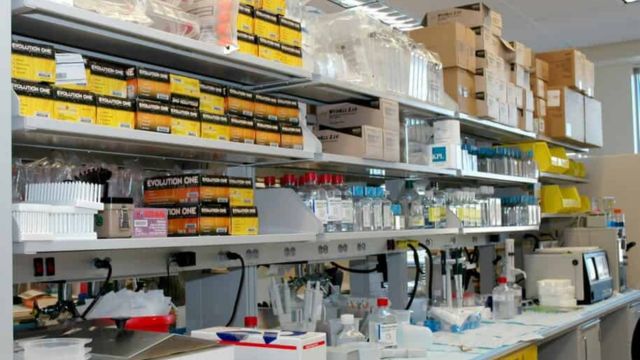The life-saving gadgets, diagnostic instruments, and basic medical supplies needed in healthcare environments are produced in great part by the medical manufacturing sector. Medical manufacturing is prone to supply chain interruptions, much as many other sectors are. Global crises like the COVID-19 epidemic or more localized events, including shortages of raw materials, delayed travel, or legislative changes, can all cause major delays and affect patient treatment. Maintaining the consistent flow of necessary goods and guaranteeing that medical facilities are ready to serve patients depend on properly managing supply chain interruptions.
In this article, we’ll explore some of the common causes of supply chain disruptions in the medical manufacturing industry and the strategies companies can employ to manage these challenges.
You may like this: Integrating Artificial Intelligence (AI) into Medical Device Manufacturing for Predictive Maintenance
Understanding the Causes of Supply Chain Disruptions

- Global Events and Crises
- The COVID-19 pandemic brought widespread disruptions to global supply chains. Lockdowns, factory shutdowns, and limited transportation options disrupted the production and delivery of medical devices, PPE (Personal Protective Equipment), and other critical supplies. While this event was exceptional, global health emergencies are a reminder of how susceptible the medical manufacturing industry can be to such disruptions.
- Raw Material Shortages
- Medical manufacturing relies heavily on raw materials such as metals, plastics, and specialized components. Shortages of key materials can arise due to geopolitical tensions, economic conditions, or natural disasters. These shortages can delay production timelines and result in increased costs.
- Transportation and Logistics Delays
- Shipping delays, both at a domestic and international level, are another major contributor to disruptions. Shipping container shortages, port congestion, and customs delays can prevent products from reaching manufacturers on time.
- Regulatory Changes
- Changes in regulations or standards, such as those enforced by the FDA (Food and Drug Administration), ISO (International Organization for Standardization), and other regulatory bodies, can lead to delays. New certification requirements or changes in testing procedures may require manufacturers to redesign processes, which can slow down production.
- Supplier Dependence
- Over-reliance on a small number of suppliers for key components is a risk factor for any industry. If one supplier faces issues, it can create a ripple effect throughout the entire supply chain. Diversifying suppliers or creating strategic partnerships can help mitigate these risks.
Strategies to Manage Supply Chain Disruptions
- Diversify Suppliers
- One of the most effective ways to manage supply chain disruptions is by diversifying suppliers. Relying on multiple suppliers in different geographic locations can provide a safety net in case one supplier experiences issues. For example, sourcing components from different regions can prevent delays caused by regional disruptions such as local natural disasters or transportation issues.
- Build Strong Supplier Relationships
- Maintaining strong relationships with suppliers can improve communication and collaboration when problems arise. It’s important to work closely with suppliers to identify potential risks early and create solutions that benefit both parties. Regular communication helps manufacturers stay ahead of disruptions and enables them to plan for contingencies.
- Invest in Technology and Automation
- Technology plays a pivotal role in streamlining supply chain management. Implementing Enterprise Resource Planning (ERP) systems and Supply Chain Management (SCM) software can provide real-time visibility into inventory levels, production schedules, and transportation statuses. This allows manufacturers to anticipate disruptions and make informed decisions quickly. Additionally, automation in manufacturing facilities can help mitigate the impact of labor shortages caused by disruptions.
- Create a Flexible Supply Chain
- Flexibility is key to managing supply chain disruptions. Developing a flexible supply chain means having the ability to quickly switch to alternative suppliers, adjust production schedules, or modify product designs in response to changes. Just-in-case inventory strategies, where companies keep extra stock of critical components, can be useful for ensuring that production can continue during shortages.
- Localize Sourcing When Possible
- Sourcing materials and components locally can reduce dependency on global supply chains and minimize the risk of disruptions. While this might increase costs, it can be a strategic move for certain critical components, particularly those that are urgently needed for medical devices.
- Focus on Risk Management and Contingency Planning
- Every medical manufacturing company should have a risk management plan in place. Identifying potential risks and creating contingency plans allows companies to react quickly when disruptions occur. Establishing backup production lines, maintaining emergency inventory levels, and creating flexible contracts with suppliers can all help companies minimize downtime during disruptions.
- Develop Strategic Partnerships
- Forming strategic partnerships with suppliers, distributors, and even competitors can enhance a company’s resilience to supply chain disruptions. Collaborative efforts can lead to shared resources, joint problem-solving, and improved logistics, all of which help keep the supply chain running smoothly.
The Role of Government and Industry Organizations
Government support can play a significant role in managing supply chain disruptions. Agencies like the FDA and the CDC can provide regulatory flexibility during emergencies, and industry associations can offer valuable resources for navigating disruptions. By working closely with these bodies, medical manufacturers can stay informed about regulatory changes and benefit from policy adjustments during crises.
You may like this: Cost Reduction Strategies Without Compromising Quality in Medical Supply Manufacturing
Conclusion
In the medical manufacturing sector, control of supply chain interruptions calls for proactive planning, adaptability, and technological integration. Manufacturers may guarantee the consistent supply of medical devices and supplies even in crises by diversifying suppliers, using data-driven solutions, and creating close relationships. These approaches will be crucial to make sure that necessary goods reach the healthcare professionals who depend on them as the medical sector keeps facing fresh obstacles.
At J&J Supplies, we are aware of the vital part supply chain management performs in the medical manufacturing sector. Explore our resources to be informed with the most recent news, ideas, and best practices in manufacturing, clinical engineering, and medical supplies. Visit our website now for professional guidance on negotiating the difficulties of contemporary production!
FAQs:
What is the most common cause of supply chain disruptions in medical manufacturing?
The most common causes include global crises (like the COVID-19 pandemic), raw material shortages, and transportation delays. Regulatory changes and over-reliance on a single supplier also contribute to disruptions.
How can manufacturers reduce the impact of supply chain disruptions?
Diversifying suppliers, investing in technology, building strong relationships with partners, and maintaining flexible supply chains are effective ways to minimize the impact of disruptions.
Why is risk management important in supply chain disruptions?
Risk management helps manufacturers anticipate potential issues and develop contingency plans to keep production going during disruptions, ensuring product availability and compliance with regulations.
How can technology help in managing supply chain disruptions?
Technology such as ERP and SCM systems allows manufacturers to monitor supply chains in real-time, anticipate problems, and make quick decisions to minimize downtime during disruptions.
Should manufacturers consider local sourcing to reduce supply chain risks?
Yes, local sourcing can reduce dependency on global supply chains, particularly for critical components, and can help mitigate risks associated with international transportation delays or geopolitical issues.








